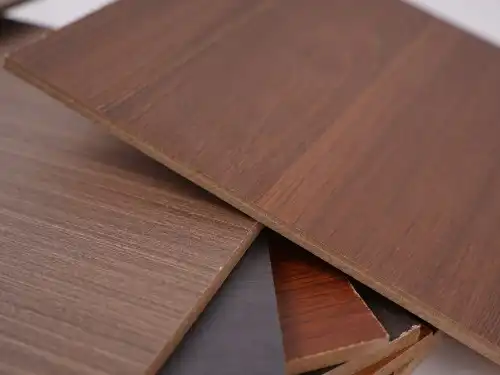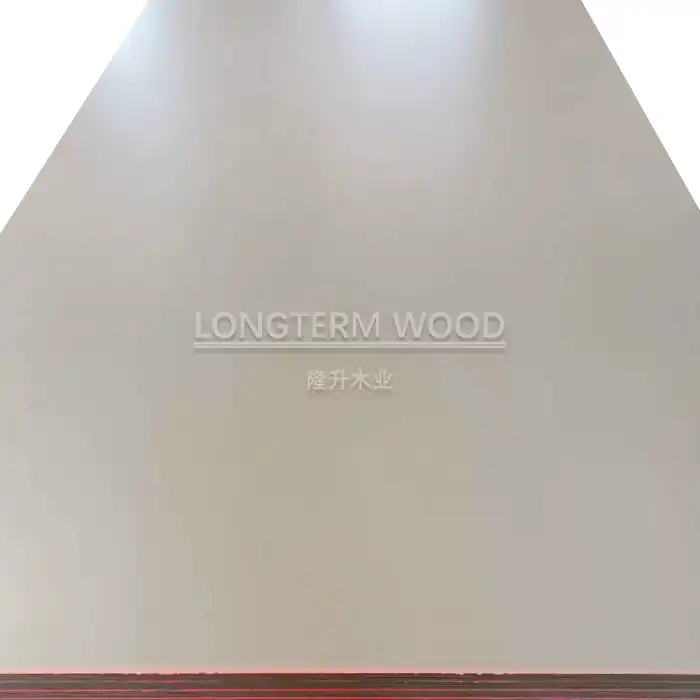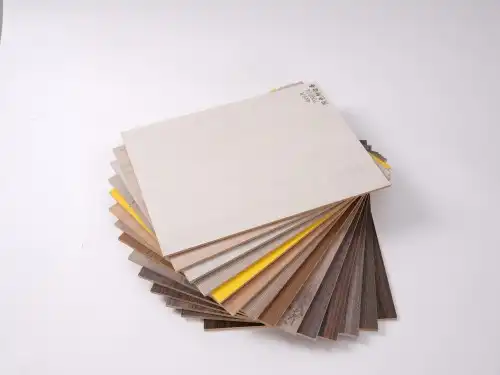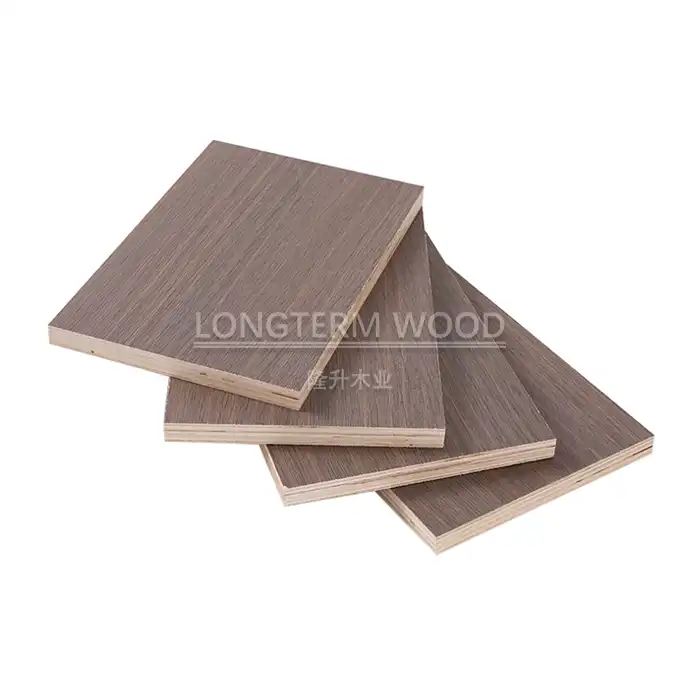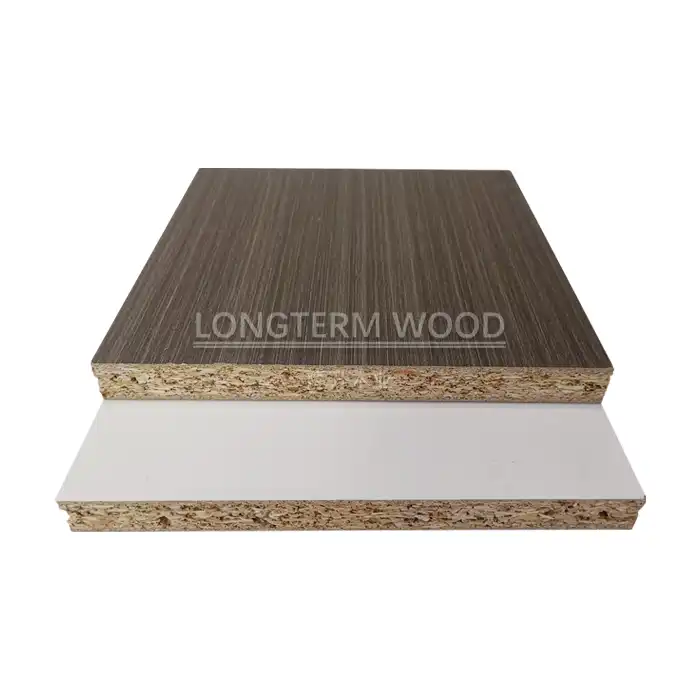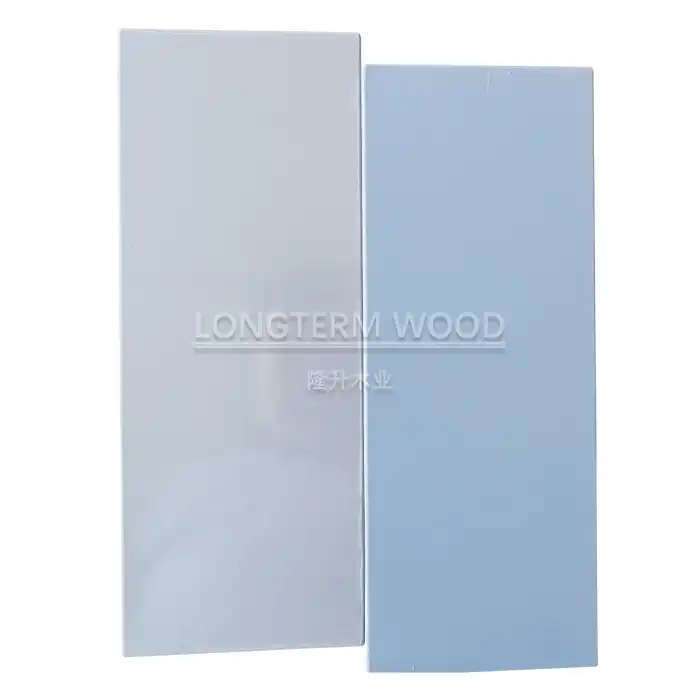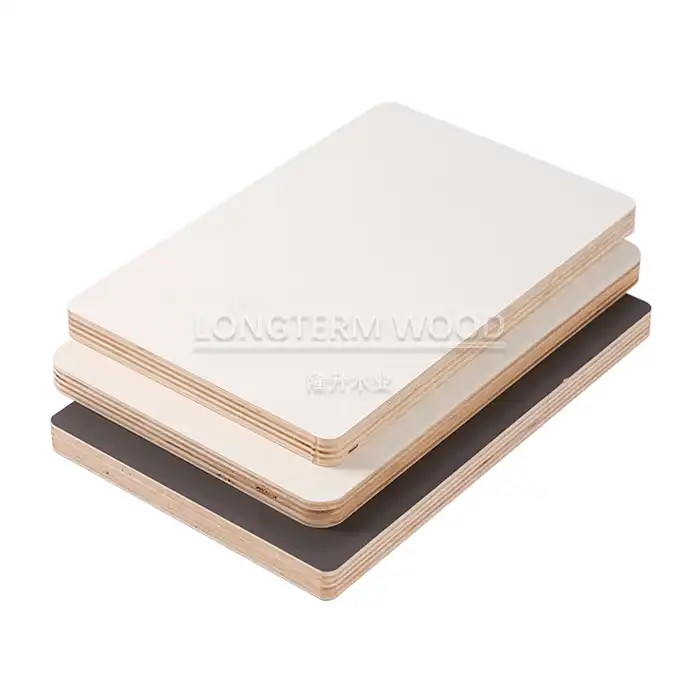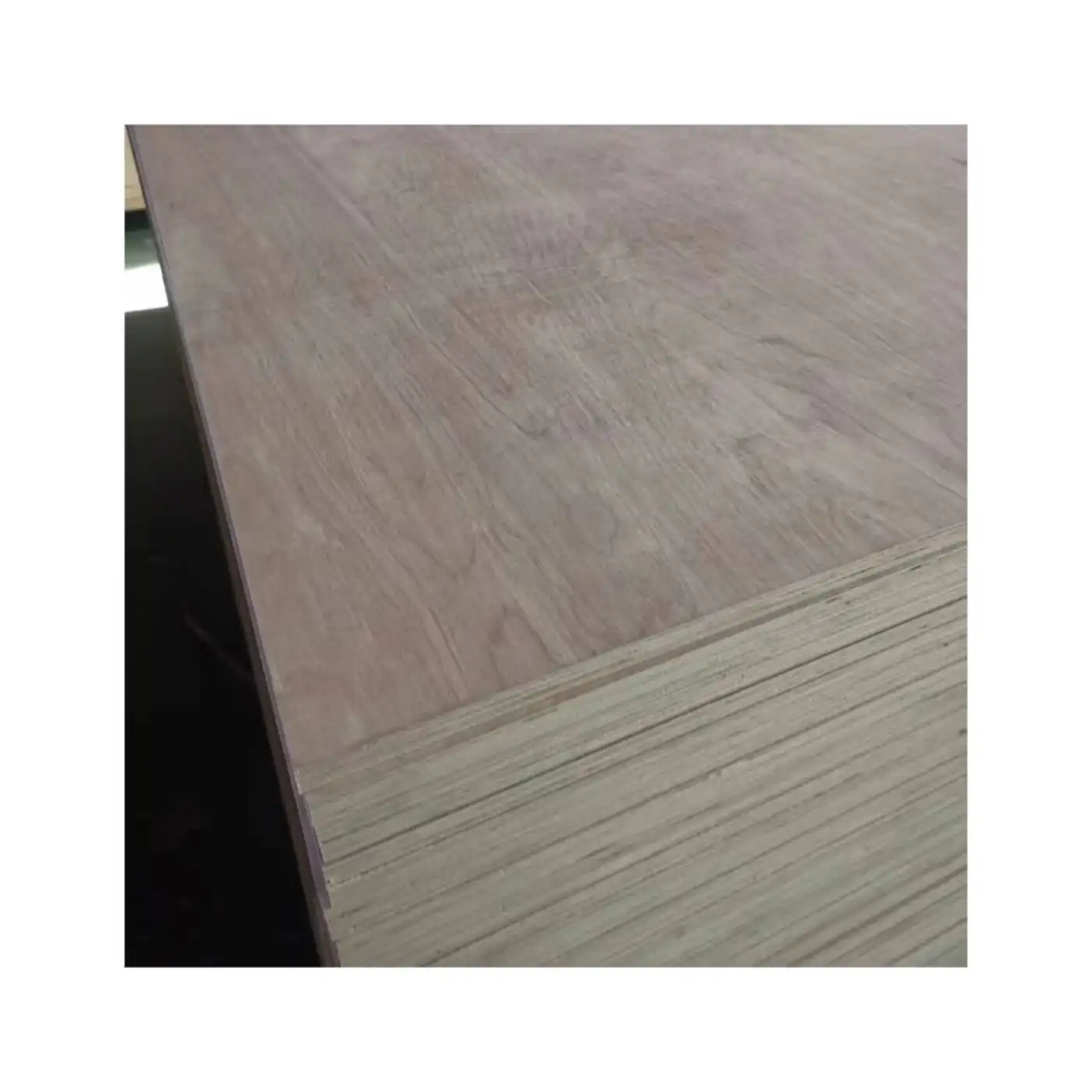
Why Is Melamine Plywood the Smart Choice for Rental Properties?
2025-05-23
In the competitive rental market, property owners and managers constantly seek materials that offer the perfect balance of durability, aesthetics, and cost-effectiveness. Melamine Plywood stands out as an exceptional solution for rental properties, combining practical benefits with visual appeal. This engineered wood product consists of a plywood core coated with melamine resin, creating a surface that withstands the challenges of tenant turnover and daily wear. Whether you're renovating existing units or developing new properties, Melamine Plywood provides the resilience and versatility needed to maintain attractive, functional spaces while maximizing your return on investment.
The Cost-Benefit Advantage of Melamine Plywood in Rental Properties
Long-Term Financial Returns Through Material Longevity
When investing in rental property materials, longevity translates directly to profitability. Melamine Plywood offers exceptional durability that significantly extends the renovation cycle for rental units. Unlike conventional materials that may require replacement after just a few tenant changes, quality Melamine Plywood can withstand multiple tenancies without showing excessive wear. The melamine resin surface creates a protective barrier that resists scratches, stains, and moisture damage—common issues in rental environments. Property owners who choose Melamine Plywood typically report reduced maintenance costs over 5-7 years compared to traditional alternatives. This extended lifespan is particularly valuable in high-turnover rental markets where units undergo frequent tenant transitions. Additionally, the structural integrity of Melamine Plywood maintains its stability through temperature and humidity fluctuations, preventing warping and delamination that might otherwise necessitate premature replacement. By investing in Melamine Plywood initially, property managers can allocate resources to other improvements rather than continual cabinet and surface replacements, creating a more sustainable financial model for property management.
Maintenance Simplicity for Property Managers
The practical maintenance advantages of Melamine Plywood translate to tangible time and cost savings for rental property managers. The non-porous surface of Melamine Plywood resists penetration from spills, making cleaning remarkably straightforward compared to untreated wood surfaces. Most stains, grease, and everyday soil can be removed with standard household cleaners without damaging the finish—a crucial benefit when preparing units between tenancies. This ease of maintenance reduces turnover time between renters, minimizing vacancy periods that directly impact revenue. Furthermore, Melamine Plywood doesn't require specialized maintenance routines such as periodic sealing, waxing, or refinishing that other materials demand. The color stability of quality Melamine Plywood means it won't fade or discolor with normal use and cleaning, maintaining its appealing appearance throughout its service life. Property managers also appreciate that minor surface scratches in Melamine Plywood can often be repaired with specialty markers or fill sticks, extending usable life without full replacement. The straightforward care requirements make Melamine Plywood particularly valuable for properties with self-managing tenants, as it withstands less-than-ideal cleaning practices that might damage more delicate materials.
Tenant Appeal Through Contemporary Aesthetics
In today's rental market, aesthetic appeal significantly influences tenant attraction and retention. Melamine Plywood offers property owners access to contemporary design options without premium pricing. Available in an extensive range of colors, patterns, and textures—including realistic wood grain finishes—Melamine Plywood allows property managers to create stylish interiors that appeal to design-conscious renters. The consistent finish of Melamine Plywood creates a cohesive, professionally designed appearance throughout rental units, elevating the perceived value of the property. Modern finishes like high-gloss white or matte black Melamine Plywood align perfectly with current interior design trends, helping older properties compete with new developments without complete renovation. Studies indicate that visually appealing rental units command 7-10% higher rental rates and experience shorter vacancy periods than outdated counterparts. Beyond cabinetry, Melamine Plywood can be used for built-in shelving, accent walls, and custom storage solutions that differentiate your property in marketing materials. The design flexibility of Melamine Plywood enables property owners to refresh the appearance of units with minimal investment when design trends evolve, maintaining competitiveness in changing markets without structural modifications. This combination of contemporary aesthetics and durability provides the perfect solution for property managers seeking to balance visual appeal with practical performance.
Practical Applications in Rental Property Development
Kitchen and Bathroom Installations That Withstand Tenant Use
Kitchens and bathrooms endure the highest levels of wear in rental properties, making material selection particularly critical. Melamine Plywood excels in these challenging environments due to its exceptional moisture resistance and structural stability. Unlike standard particleboard or MDF, quality Melamine Plywood can withstand the humid conditions present in bathrooms without warping or delamination. The moisture-resistant properties extend to kitchen applications, where water exposure from sinks and dishwashers typically deteriorates standard cabinetry over time. The sealed surface of Melamine Plywood prevents water penetration that would otherwise lead to swelling and deterioration of cabinet structures. For countertop substrates, Melamine Plywood provides a stable foundation that maintains its dimensional integrity despite temperature fluctuations from cooking appliances. The resistance to household chemicals makes Melamine Plywood particularly valuable in rental scenarios where tenants may use harsh cleaning products without considering material compatibility. Beyond cabinetry, Melamine Plywood performs exceptionally well for bathroom vanities, medicine cabinets, and shower surrounds, maintaining its integrity even with daily moisture exposure. Professional installers appreciate that Melamine Plywood accepts standard woodworking techniques while offering superior screw retention compared to particleboard alternatives, resulting in installations that remain secure throughout years of tenant use. This combination of moisture resistance and structural performance extends the service life of kitchen and bathroom fixtures, reducing replacement frequency in these high-maintenance areas.
Built-In Storage Solutions for Space Optimization
Maximizing functional space represents a persistent challenge in rental property management, particularly in urban markets where square footage commands premium rates. Melamine Plywood enables the creation of custom storage solutions that transform otherwise unusable spaces into valuable assets. The dimensional stability and strength-to-weight ratio of Melamine Plywood make it ideal for floor-to-ceiling built-ins that maximize vertical storage without requiring structural modifications to the property. Unlike prefabricated storage systems, custom solutions using Melamine Plywood can perfectly fit irregular spaces, alcoves, or under-stair areas that would otherwise remain underutilized. The precise machinability of Melamine Plywood allows for intricate designs incorporating specialized storage features like pull-out pantries, hidden compartments, and multi-tiered drawer systems that substantially increase functional storage capacity. Property managers report that well-designed storage solutions using Melamine Plywood can effectively increase the functional utility of units by 15-20% without altering the physical footprint. The aesthetic consistency of Melamine Plywood ensures that these custom storage solutions integrate seamlessly with existing cabinetry and furnishings, creating a cohesive design throughout the property. Additionally, edge-banded Melamine Plywood creates clean, professional-looking finishes even in tight corners and complex configurations where traditional materials might appear unfinished. For smaller rental units, where efficient space utilization directly impacts rental value, these customized Melamine Plywood storage solutions can significantly enhance property competitiveness in crowded markets.
Durable Flooring Underlay and Wall Panel Applications
Beyond cabinetry and storage, Melamine Plywood offers exceptional performance as an underlay for various flooring systems in rental properties. The dimensional stability of high-quality Melamine Plywood creates a consistently level substrate that prevents premature wear patterns and extends the service life of overlying vinyl, laminate, or engineered wood flooring. This application proves particularly valuable in multi-story rental buildings where floor deflection and uneven surfaces typically accelerate finish flooring deterioration. As wall paneling, Melamine Plywood delivers both aesthetic and functional benefits to rental properties. The wide range of finishes, from textured wood grains to solid colors, allows property managers to create feature walls that enhance interior design without the maintenance requirements of paint or wallpaper. In high-traffic areas such as entryways and corridors, Melamine Plywood wall panels resist scuffing and damage from furniture movement during tenant transitions—a common issue that typically necessitates repainting between occupancies. The sound-dampening properties of properly installed Melamine Plywood wall systems also improve unit-to-unit acoustic separation, addressing a frequent tenant complaint in multi-unit properties. For property renovations, Melamine Plywood wall panels can effectively cover existing damaged surfaces without extensive preparation, significantly reducing labor costs and project timelines. The fire-resistant properties of quality Melamine Plywood contribute to safety compliance in multi-unit dwellings, with certain formulations meeting building code requirements for flame spread and smoke development. These diverse applications demonstrate how Melamine Plywood extends beyond traditional cabinetry to solve multiple challenges in rental property construction and renovation.
Environmental and Health Considerations for Modern Rentals
Indoor Air Quality Improvements Through Low-Emission Materials
Today's tenants increasingly prioritize healthy living environments, making indoor air quality a significant consideration for competitive rental properties. Premium Melamine Plywood addresses these concerns through advanced formulations that minimize harmful emissions. Unlike unregulated wood products that may release substantial formaldehyde and volatile organic compounds (VOCs), quality Melamine Plywood adheres to strict E1 and E0 emission standards, significantly reducing potential air contaminants. The sealed surface of Melamine Plywood acts as an effective barrier that encapsulates the core material, preventing off-gassing that commonly occurs with untreated wood products. This emission reduction is particularly valuable in newer, energy-efficient buildings with limited air exchange rates where indoor pollutants can concentrate to problematic levels. Property owners who select certified low-emission Melamine Plywood can confidently market their units as health-conscious living spaces—an increasingly valuable differentiation in competitive rental markets. Research indicates that health-oriented property features can command 5-8% premium rates among environmentally conscious renters, particularly in urban markets with educated tenant demographics. The moisture resistance of Melamine Plywood also contributes to healthier indoor environments by inhibiting mold and mildew growth that typically occurs in conventional wood products exposed to humidity. For property managers, these health benefits translate to reduced tenant complaints about odors and irritants that might otherwise prompt early lease termination or negative reviews. By incorporating low-emission Melamine Plywood throughout their properties, landlords demonstrate commitment to tenant wellbeing while simultaneously protecting their investments from reputation damage associated with poor indoor air quality.
Sustainable Resource Management for Eco-Conscious Properties
Environmental sustainability has transitioned from niche concern to mainstream expectation among modern renters, particularly in competitive urban markets. Responsibly manufactured Melamine Plywood aligns with these values through efficient resource utilization. The engineered nature of Melamine Plywood maximizes yield from harvested timber, utilizing approximately 30% more of each tree compared to solid wood applications. Leading manufacturers source core materials from certified sustainable forestry operations that maintain environmental balance through careful harvest planning and reforestation programs. The production process for quality Melamine Plywood incorporates recycled wood content for core layers, diverting material from landfills while maintaining structural integrity. This circularity appeals strongly to environmentally conscious tenants who consider the ecological footprint of their housing choices. Property managers marketing to millennial and Generation Z demographics particularly benefit from highlighting these sustainability credentials, as these cohorts consistently demonstrate willingness to pay premium rates for environmentally responsible housing options. The durability of Melamine Plywood further contributes to sustainability by reducing replacement frequency and associated resource consumption throughout the property lifecycle. For property developers pursuing green building certifications such as LEED or WELL Building Standard, properly sourced Melamine Plywood can contribute valuable points toward certification requirements. The thermal stability of Melamine Plywood also improves building envelope performance, contributing to overall energy efficiency—another important consideration for environmentally positioned rental properties. By selecting certified sustainable Melamine Plywood, property owners simultaneously address market demands for responsible materials while benefiting from the practical advantages of this versatile product.
Lifecycle Analysis and Circular Economy Benefits
Forward-thinking property investors increasingly evaluate materials through comprehensive lifecycle analysis rather than focusing solely on initial costs. Melamine Plywood performs exceptionally well under this scrutiny due to its extended service life and potential for repurposing. Quality Melamine Plywood typically remains serviceable for 15-20 years in proper applications—significantly outlasting many alternative materials that require replacement at 5-7 year intervals. This longevity substantially reduces lifecycle resource consumption and waste generation associated with frequent renovations. At end-of-life, Melamine Plywood can be repurposed rather than discarded, supporting circular economy principles increasingly valued by municipalities and tenants alike. During property renovations, existing Melamine Plywood components can often be refaced rather than completely replaced, preserving the core material while updating aesthetics—a process that substantially reduces renovation waste compared to traditional demolition and replacement. The manufacturing process for Melamine Plywood utilizes approximately 40% less energy compared to solid hardwood processing for equivalent applications, reducing embedded carbon footprint throughout the product lifecycle. For property managers implementing sustainability programs, the demonstrated durability of Melamine Plywood contributes to reduced maintenance waste and associated disposal costs over the property lifecycle. The controlled manufacturing environment for quality Melamine Plywood ensures consistent material properties without the natural variations that lead to premature failure and replacement in conventional wood products. By considering these lifecycle benefits, property investors can confidently incorporate Melamine Plywood into long-term sustainability strategies while simultaneously addressing immediate functional needs.
Conclusion
Melamine Plywood represents the ideal synthesis of practicality, aesthetics, and value for rental property applications. Its exceptional durability withstands tenant turnover while minimizing maintenance costs. With diverse design options and sustainable formulations, this versatile material meets the demands of today's competitive rental market. For property owners seeking long-term performance with immediate visual appeal, Melamine Plywood delivers unmatched results.
Ready to transform your rental properties with high-quality Melamine Plywood? At Linyi Longterm Wood Industry Co., Ltd., we offer customized solutions backed by over 15 years of production expertise and rigorous quality control. Our eco-friendly products meet the highest standards while providing competitive pricing and reliable delivery. Contact our team at howie@longtermwood.com to discuss your specific requirements and discover why property managers worldwide trust our Melamine Plywood for their most demanding applications.
References
1. Johnson, R. T., & Williams, E. S. (2023). Sustainable Materials in Rental Property Management: A Cost-Benefit Analysis. Journal of Real Estate Development, 45(3), 112-128.
2. Chen, H., & Thompson, D. (2024). Durability Factors in Modern Building Materials for Multi-Family Housing. Construction Materials Research Quarterly, 18(2), 67-82.
3. Martinez, A. L., & Kumar, V. (2022). Environmental Considerations in Rental Property Development: Impact on Tenant Retention and Profitability. Urban Housing Economics Review, 29(4), 203-221.
4. Wilson, P. R., & Anderson, K. E. (2023). Material Selection Guidelines for Rental Property Renovation: A Lifecycle Approach. Property Management International, 37(1), 45-59.
5. Roberts, S. T., & Lee, J. H. (2024). Tenant Preferences and Property Value: The Impact of Sustainable Materials in Residential Rentals. Journal of Urban Real Estate Investment, 26(3), 178-194.
6. Zhang, Y., & Phillips, M. (2023). Advanced Wood Composites in Contemporary Construction: Applications and Performance Metrics. Architectural Materials Science Review, 41(2), 89-105.
YOU MAY LIKE







